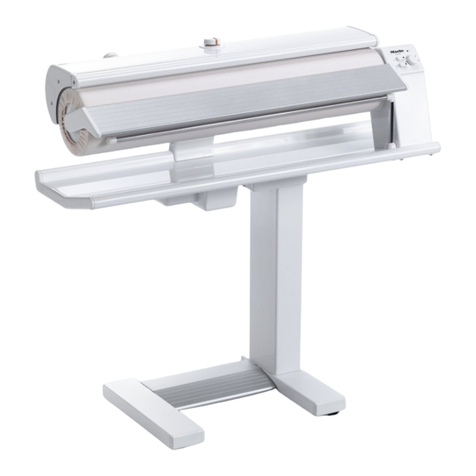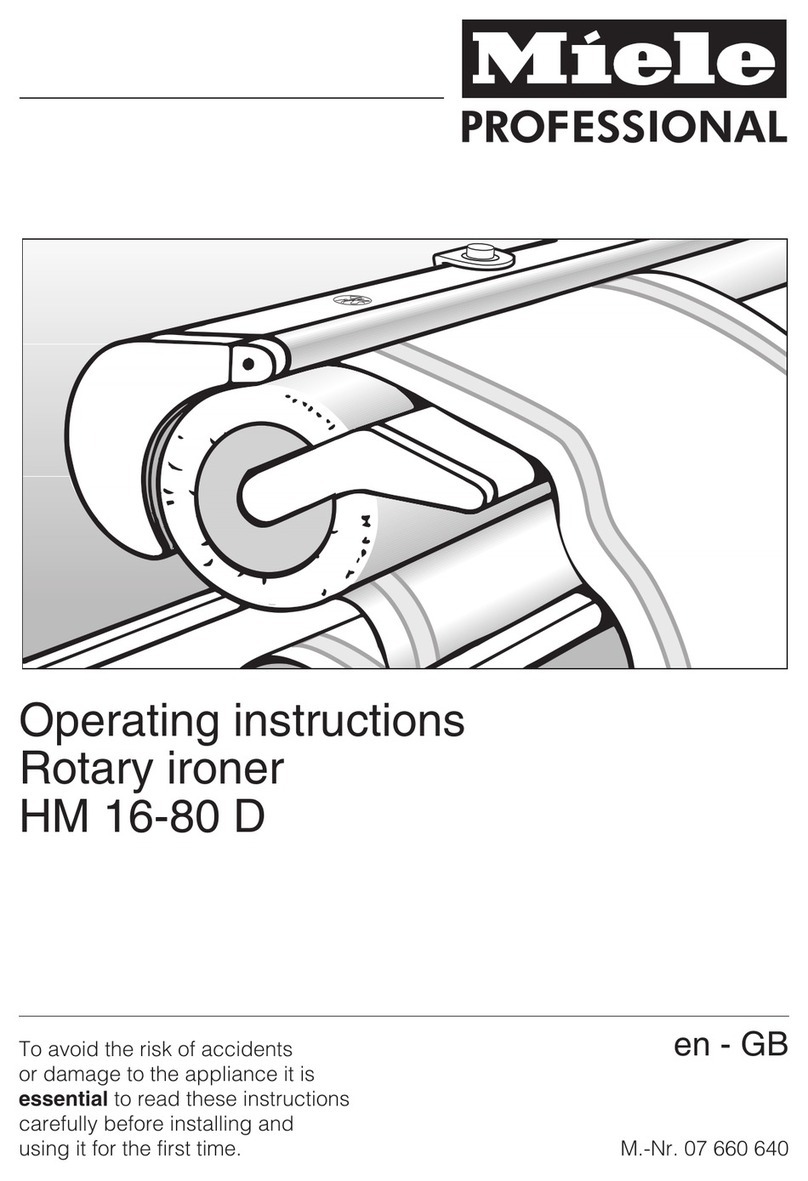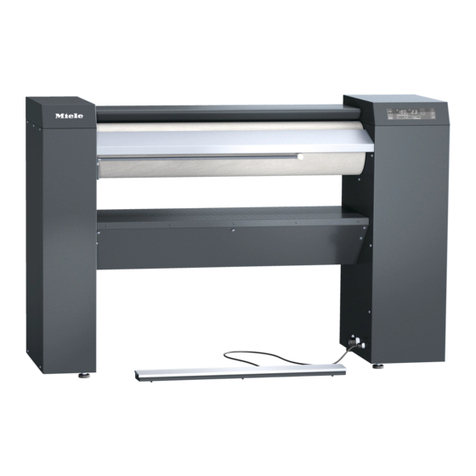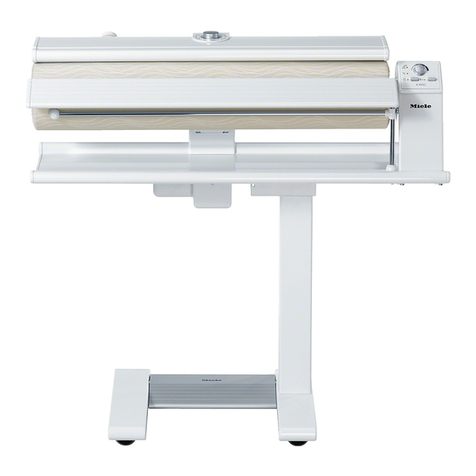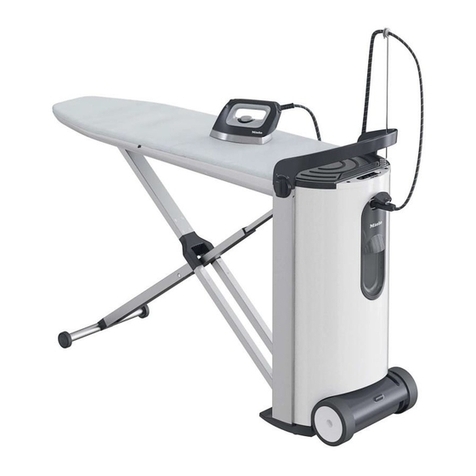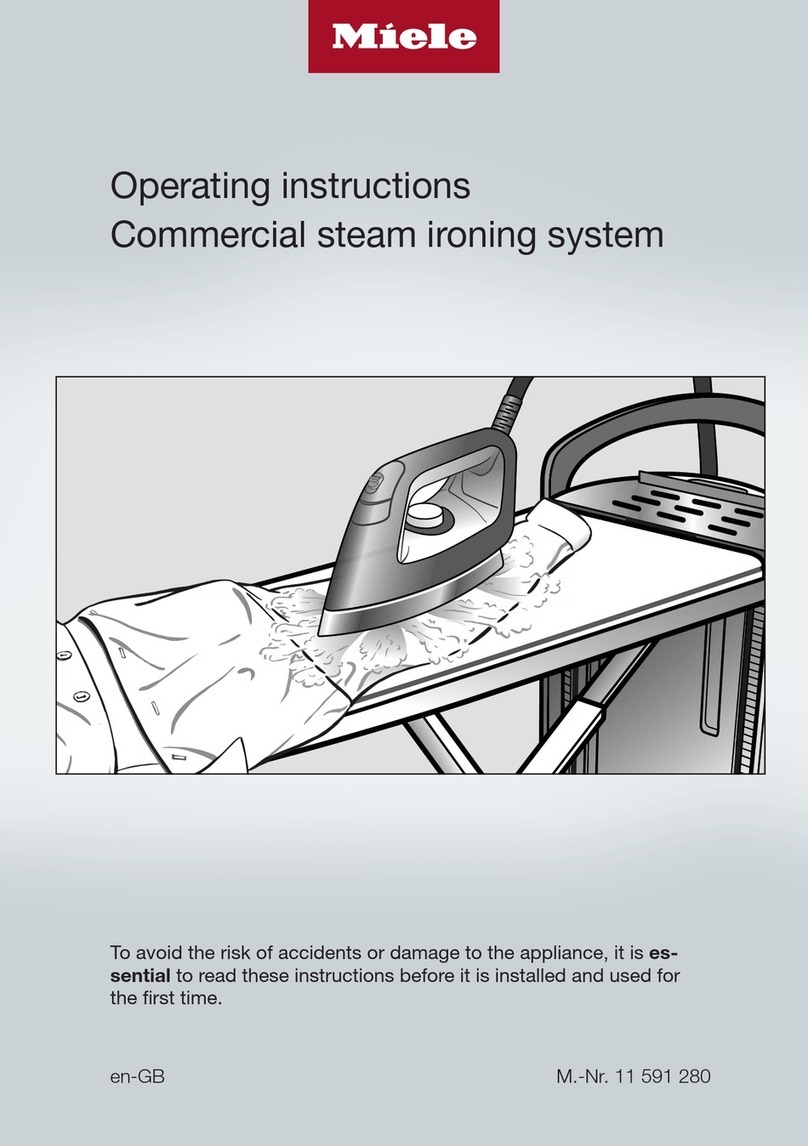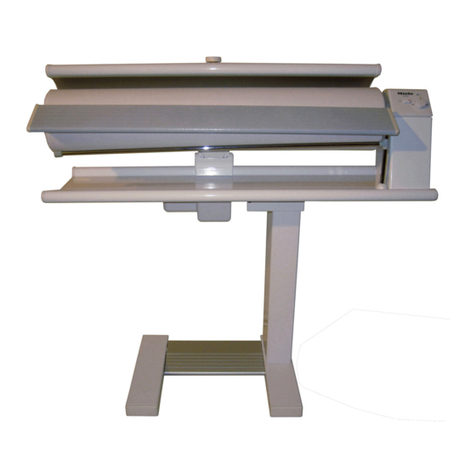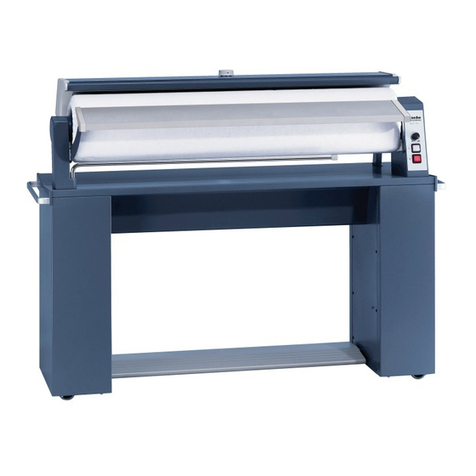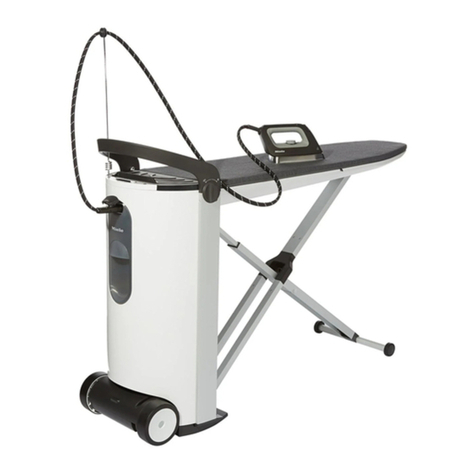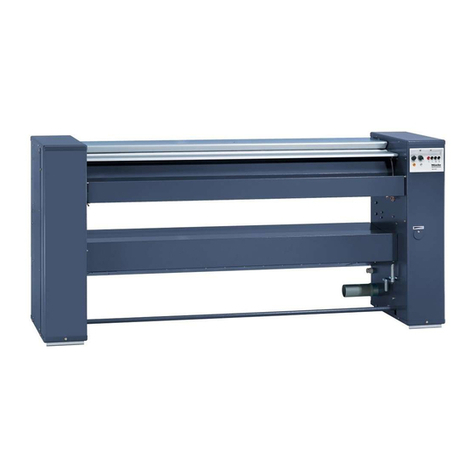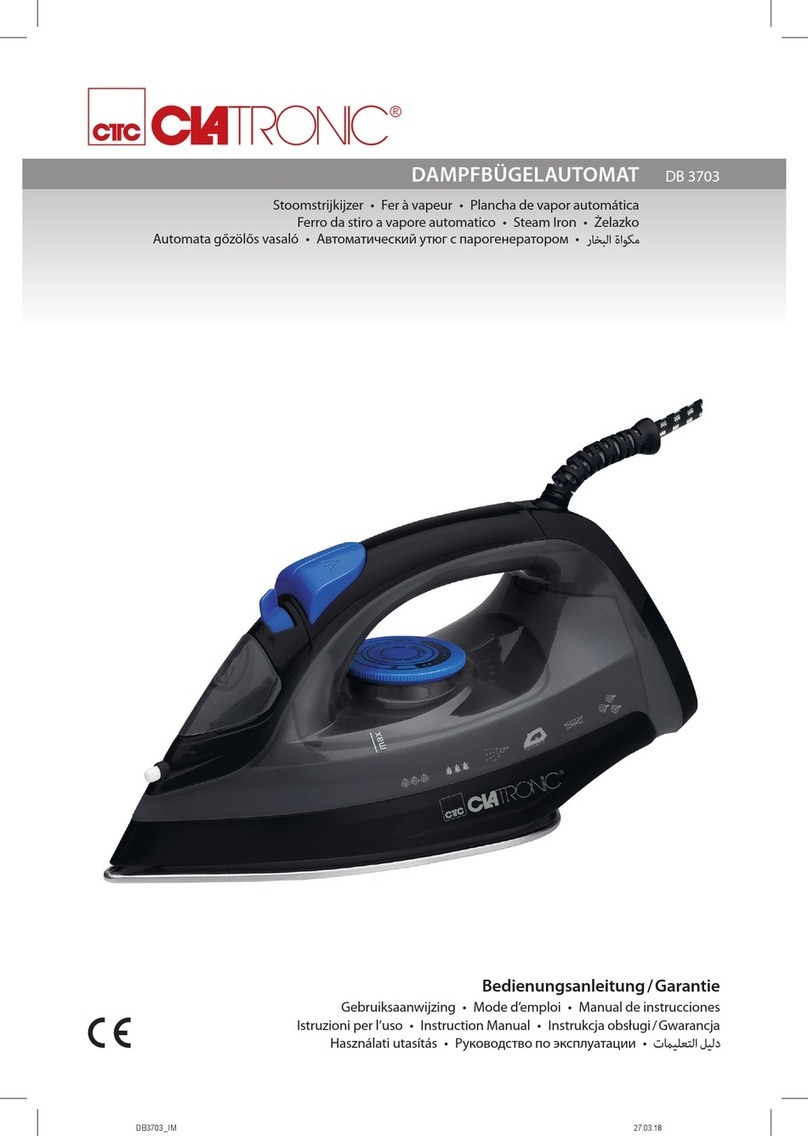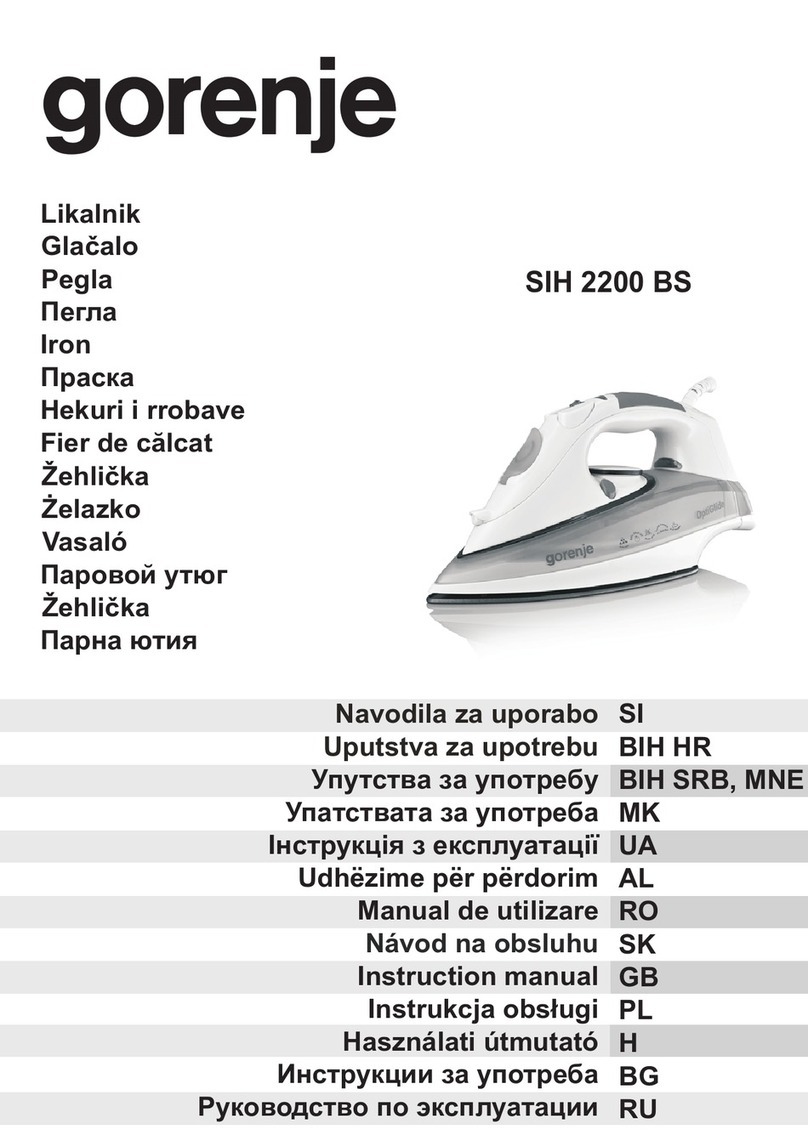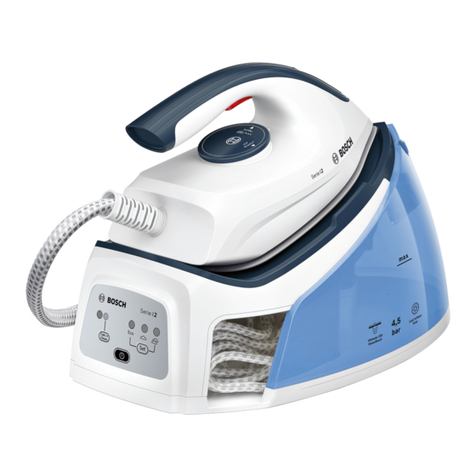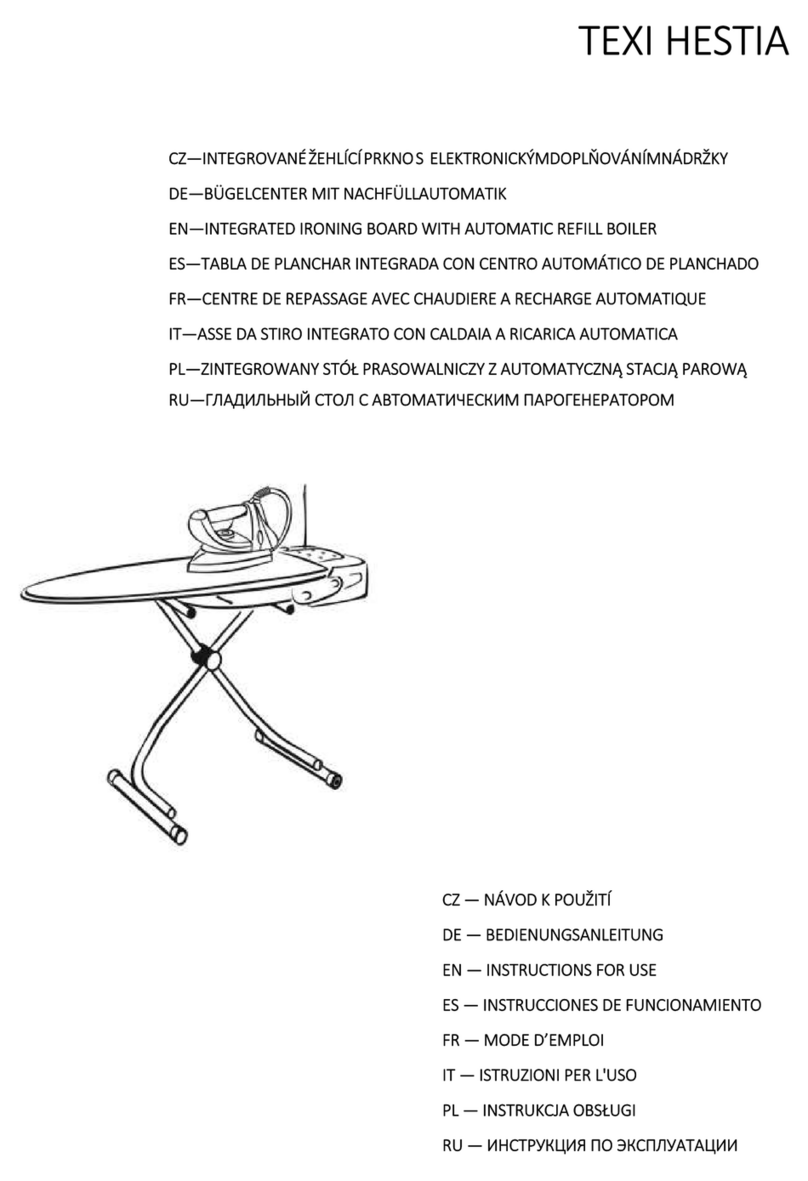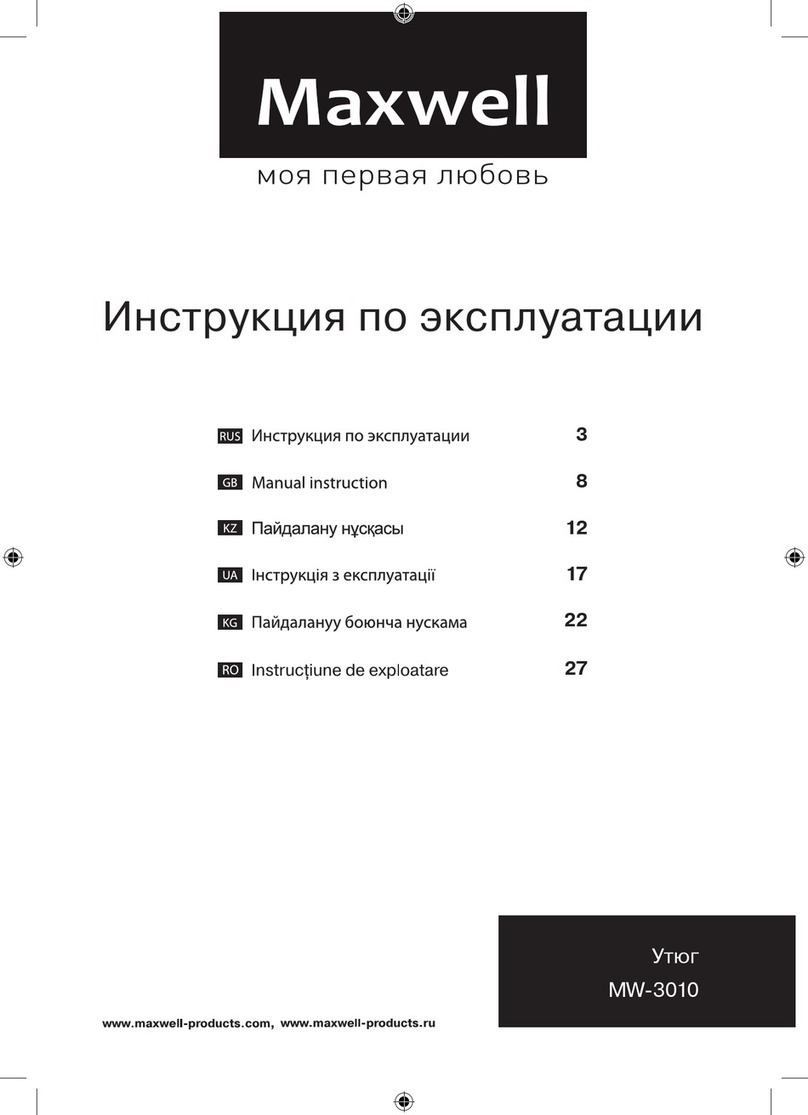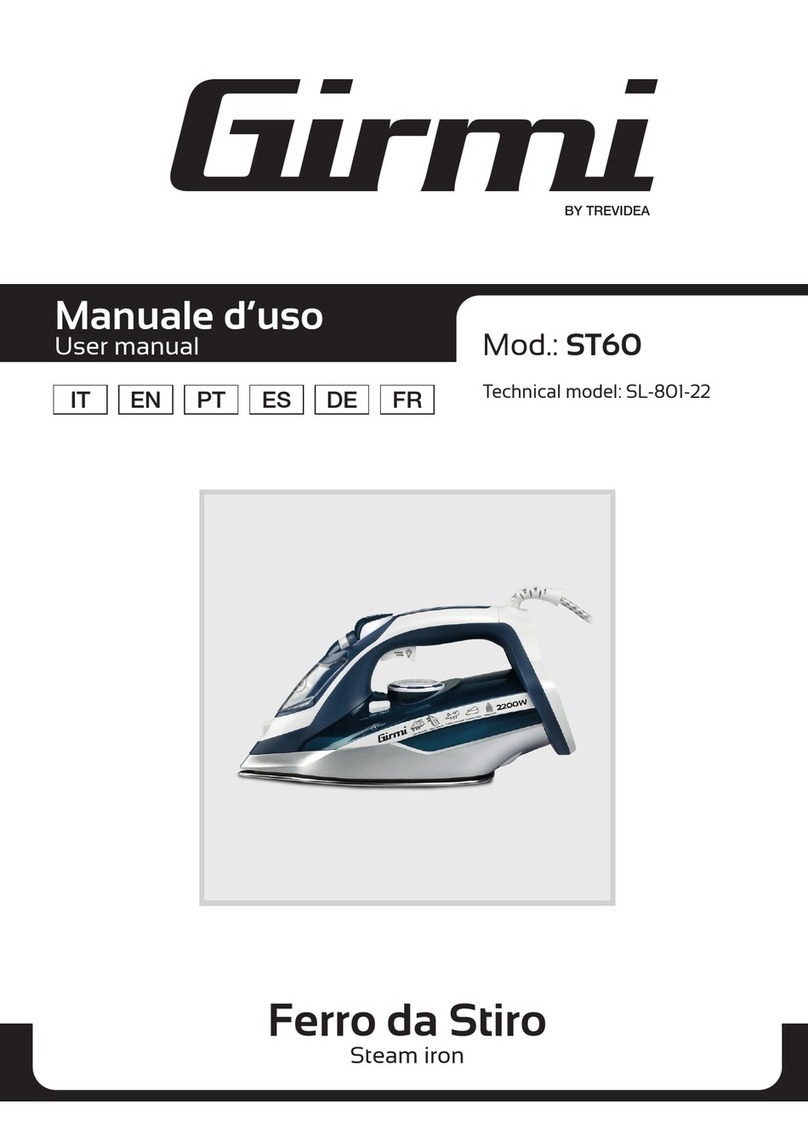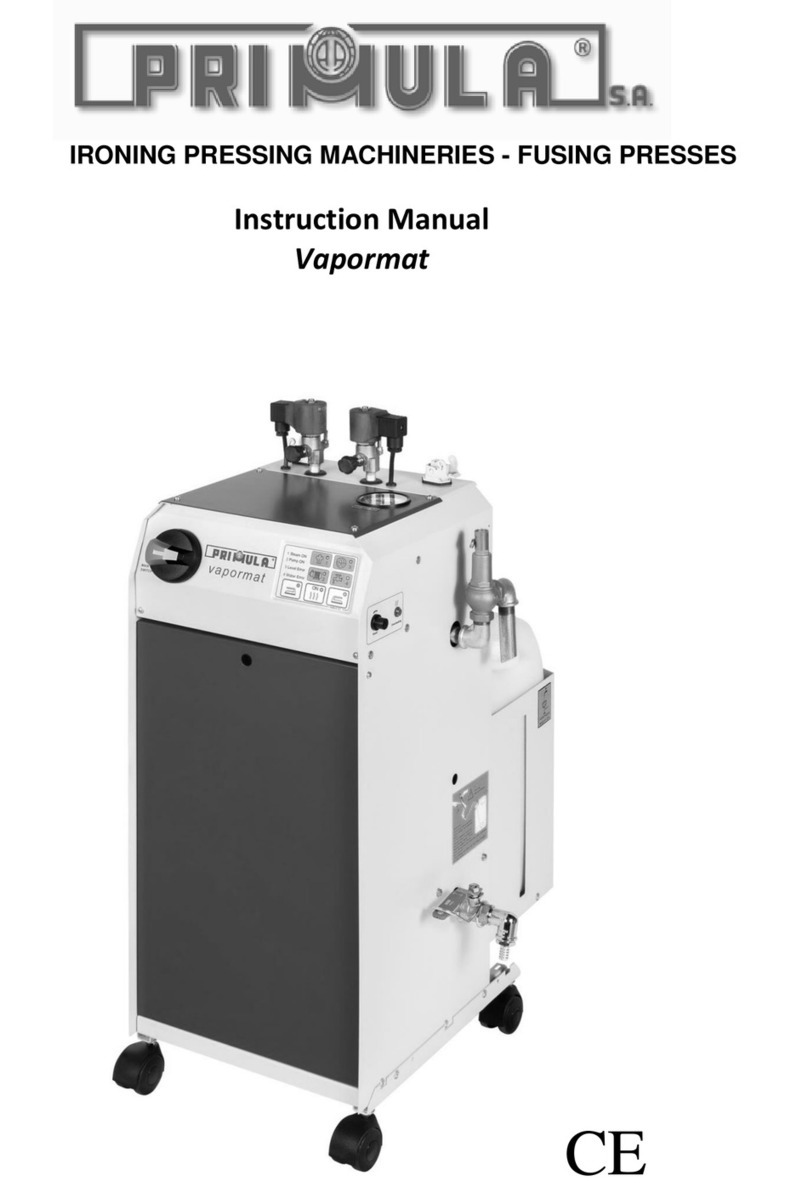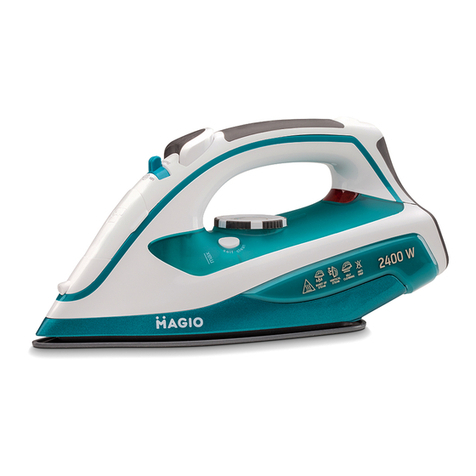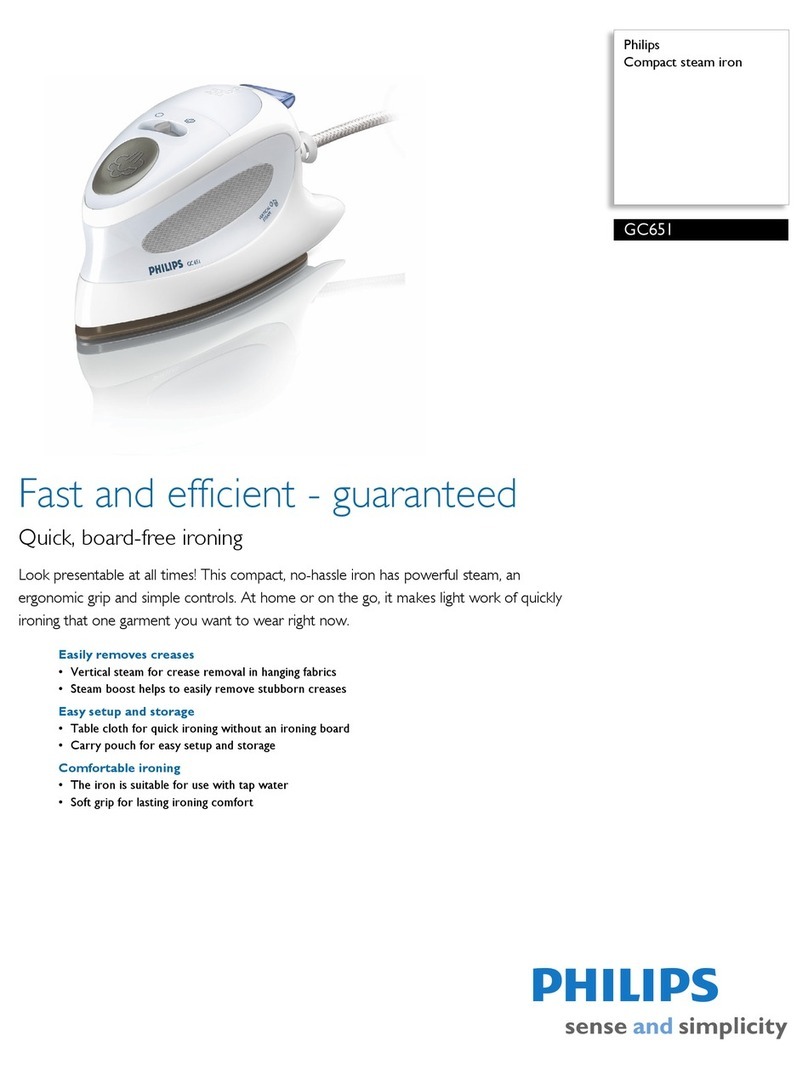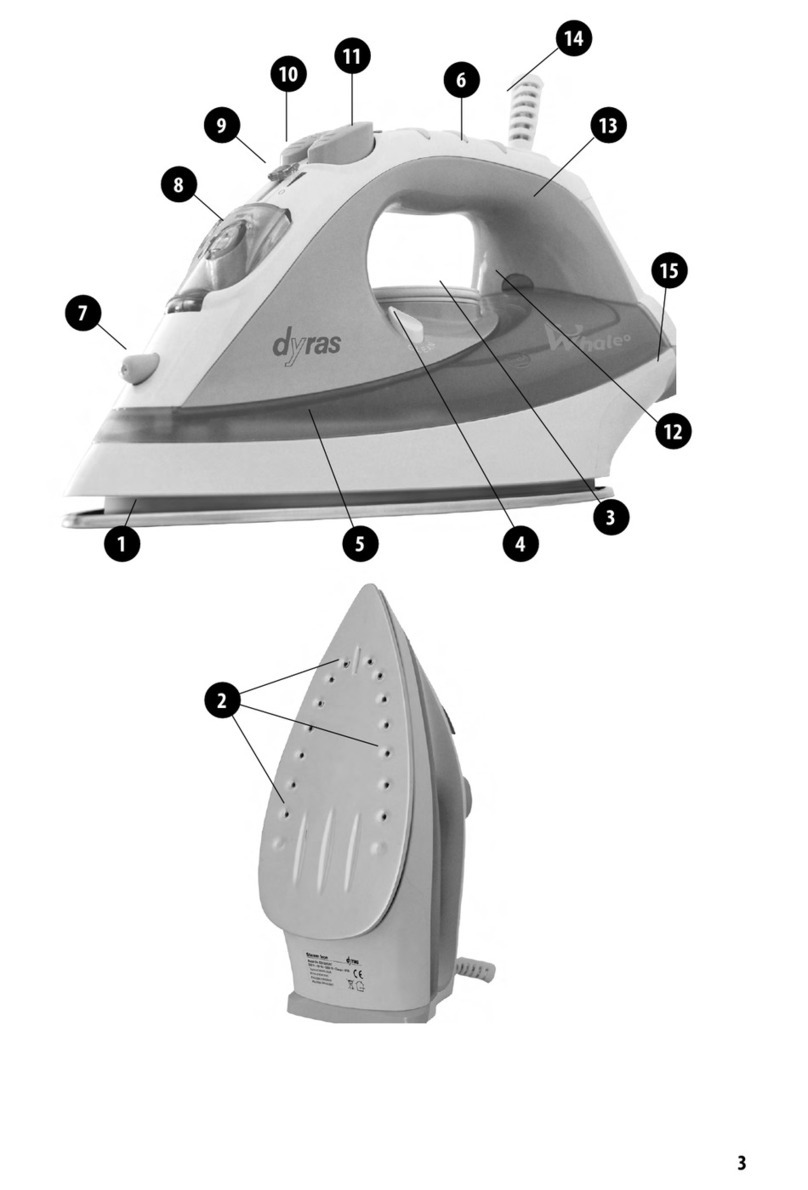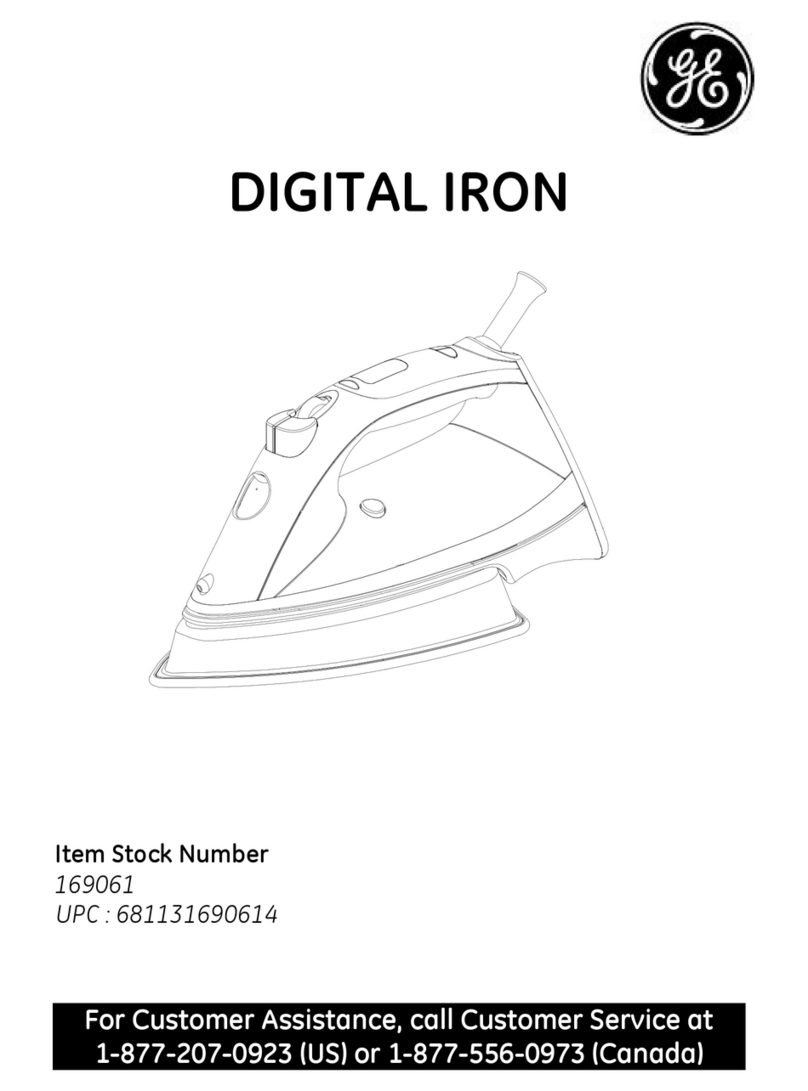To prevent injury and machine damage
read all instructions before installation or
use.
Electrical safety
Be certain this appliance is properly
installed and grounded by an authorized
technician. To guarantee the electrical safety
of this appliance, continuity must exist
between the appliance and an effective
grounding system. It is imperative that this
basic safety requirement be met and tested.
Consult a qualified electrician if in doubt.
The manufacturer cannot be held
responsible for damage which is the direct
or indirect result of incorrect installation or
connection.
Use
This rotary iron is only intended for
ironing fabrics washed in water. Check
the fabric care labels to be sure the
materials can be ironed.
Only allow trained personnel to operate
the machine.
Do not let children play in, on or near the
rotary iron. Do not let them play with the
controls or operate the unit.
Be aware of loose fitting or hanging
garments when using the rotary iron.
Sleeves, apron ties, bracelets, etc. could be
caught by the roller.
Danger of burns when the heater plate is
touched. Do not smooth an item between
the heater plate and roller.
Do not place laundry on the heater plate.
Danger of fire! Use the laundry bar.
Do not damage, remove or bypass any
of the safety features and controls of the
rotary iron.
Do not operate a machine with an
electrical fault until repaired.
Repairs to electrical appliances should
only be carried out by an authorized
technician in accordance with local and
national safety regulations. Repairs and
other work by unqualified persons could be
dangerous. The manufacturer cannot be
held responsible for unauthorized work.
Faulty components must only be
replaced with genuine Miele spare parts.
Only genuine Miele spare parts can
guarantee the safe operation of this
machine.
Before installation or service, disconnect
the power supply to the work area by
removing the fuse or "tripping" the circuit
breaker to the unit.
Any removable outer panels must be in
place, and all moving or electrical parts
shielded before the machine is operated.
Only use genuine Miele accessories. If
other parts are used the guarantee,
performance and product liability claims
may become void.
Ensure that any other person operating
this machine is familiar with these safety
and operating instructions.
Regard the national and local codes and
standards.
SAVE THESE INSTRUCTIONS
IMPORTANT SAFETY INSTRUCTIONS
3
